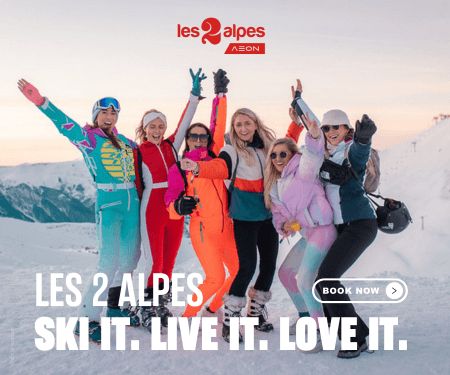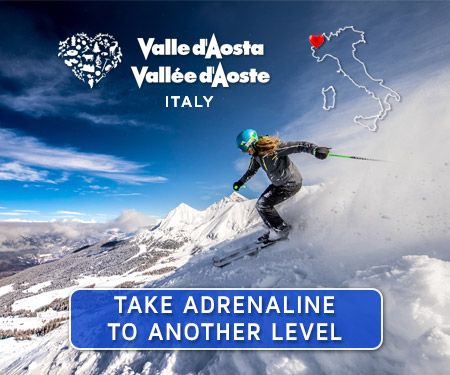Ranked
28th
of 235 ski resorts
Overall Rating
4.54
From 35 Reviews
77
Total Runs
1816
Bottom Elevation
2900
Top Elevation
115
Skiable Terrain
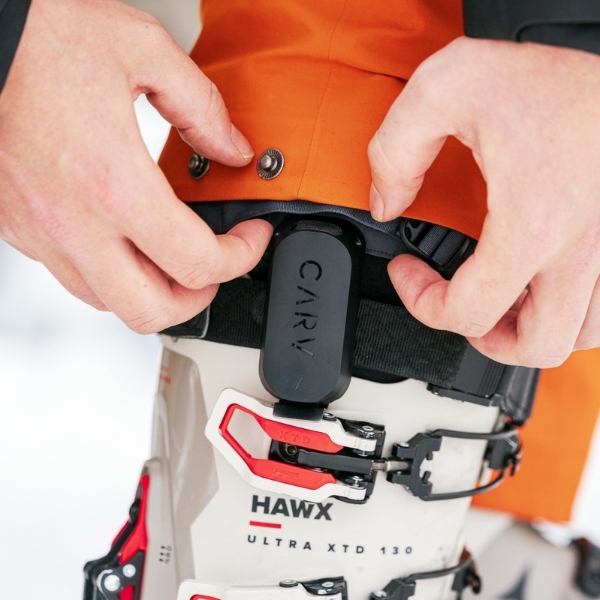
Sponsored Partner
Unlock Challenging Slopes in Livigno
Level up your ski technique, master more of the mountain and have more fun on the snow with Carv! Carv 2 clips to your boot, helping you to improve on every terrain type. Get real-time audio coaching as you ski, as boot sensors detect your movement.
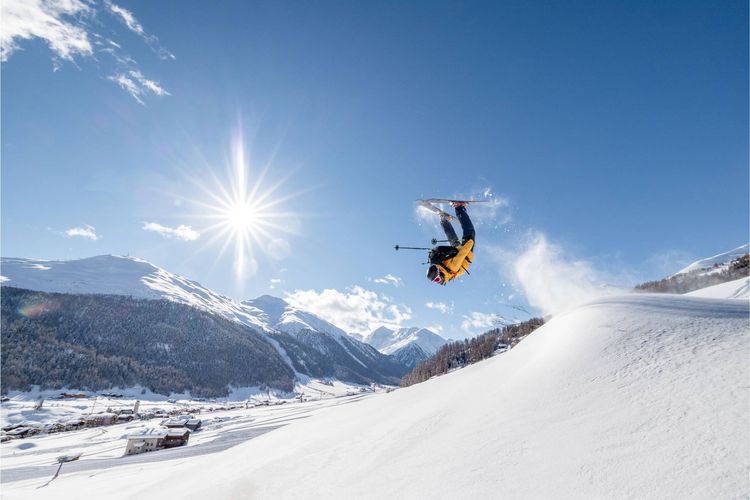
Livigno Overview
Nestled at just over 1800m up in the Italian Alps, Livigno is a bustling town with two separate ski areas on either side of the valley, Carosello 3000 and Mottolino. Situated only a very short distance from Switzerland, Livigno is known as a duty-free shopping haven, which was historically justified to attract visitors, acting as a reward for taking the treacherous journey.
Years ago, dairy farmers mostly inhabited the area and the population struggled financially due to its remote location. Today, Livigno thrives as a snow-sure ski holiday destination with more than 115km of pistes to explore and a dependable annual snowpack. Often referred to as Little Tibet, Livigno sits atop a scenic plateau below the Upper Valtellina, a picturesque valley spanning 12km.
Somehow unscathed from the unsightly modern developments that have taken over most European ski resorts, Livigno is a quaint choice complete with its own ancient dialect. You’ll find an abundance of ‘baitas’ here, which is the term for old house. Equidistant from Zurich, Innsbruck and Milan, you’ll also have a range of options when it comes to getting here.
"Been here 11 times. Great skiing January to April. Huge selection of runs from blues to blacks. The whole town is focused on tourism and skiing"
"Great for any level with an abundance of instructors, had a great time. Great value for money and something for everyone. Would highly recommend"
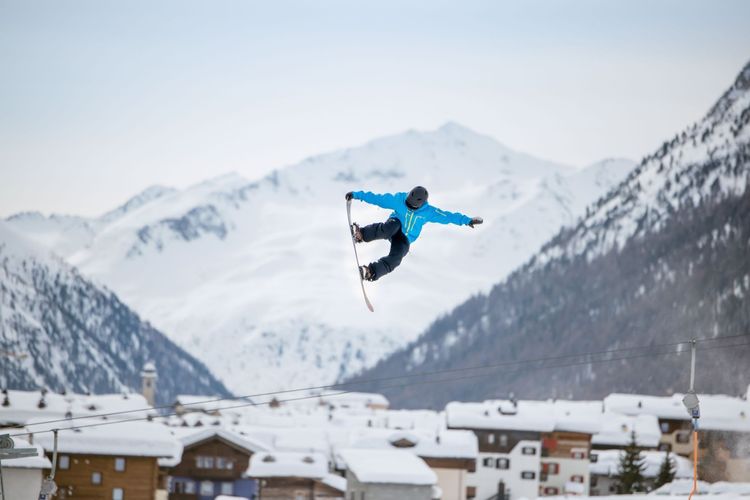
The Skiing in Livigno
While two ski areas on either side of the valley might make it sound like Livigno is hard to get around, the area is really well-serviced and a free shuttle bus runs every 10 minutes throughout the winter season. Named as the host for the 2026 Winter Olympics, it’s also the training ground for GB’s park and pipe team, but more on that below.
Livigno town sits at the bottom of the valley, sandwiched by the ski areas of Mottolino and Carosello climbing up on either side, which share a common lift pass and make up the skiable domain of Livigno. To the West sits the larger and higher of the two, Carosello 3000. There are plenty of red and blue graded pistes to enjoy here, with the backside of the mountain promising off-piste delights and some serious powder pockets, especially if you follow the treeline along in the Costaccia direction.
On the eastern slopes of Mottolino (and so softening up nicely in that early morning sun,) terrain is somewhat more limited than over the valley but there are some great blues for beginners as well as three back runs down from the Della Neve peak.
For riders looking to hone their freestyle skills, there’s a total of four terrain parks here which are the Mottolino Snowpark, ‘The Beach’ Snowpark at Carosello, the Amerikan Snowpark and Snowpark20. The main two are Mottolino and The Beach. Mottolino has hosted everything from the Burton European Open to regular training camps for the British National Team and is over 800m in length with more than 60 structures.
"Conditions are always great. Slope are brilliant. Transport around the resort is top notch. Great value for money."
"There was a small snowpark right behind our apartment with a button lift, you could ski from this park across to the main gondola. Due to not being able to access the park by skiing from the resort to the park, it was always empty, and we had a snowpark to ourselves most of the time."
"the easily accessible off-piste areas are a huge bonus. Massive attraction for people wanting a safer experience in powder, with the main zones leading to paths & roads where you can safely find your way back from."
Ranked Highly For
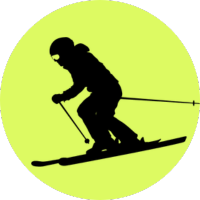
Intermediates
1st of 120 worldwide

Eating Out
2nd of 239 worldwide

Snow Parks
11th of 230 worldwide
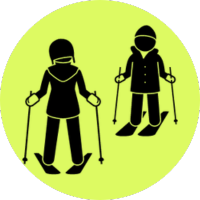
Ski School Quality
13th of 194 worldwide
Eating Out in Livigno
The town of Livigno is busy, bustling and home to one of Europe’s highest dairies. You’re guaranteed to be spoiled for choice (and cheese) when it comes to eating out. On the mountain, there’s a selection of cuisines available from the slopeside huts, with pizza being the staple at Carosello 3000 (at the top of gondola 12), while American Steakhouse is very much the vibe at Tea Borch. In the town, there are over 100 to choose from. Both Focolare and La Piöda are known for great Italian cuisine and seafood, and an abundance of pizzerias await. For a fine-dining experience, the Michelin-recommended Al Persef prioritises the use of locally-sourced ingredients and excellent wines.
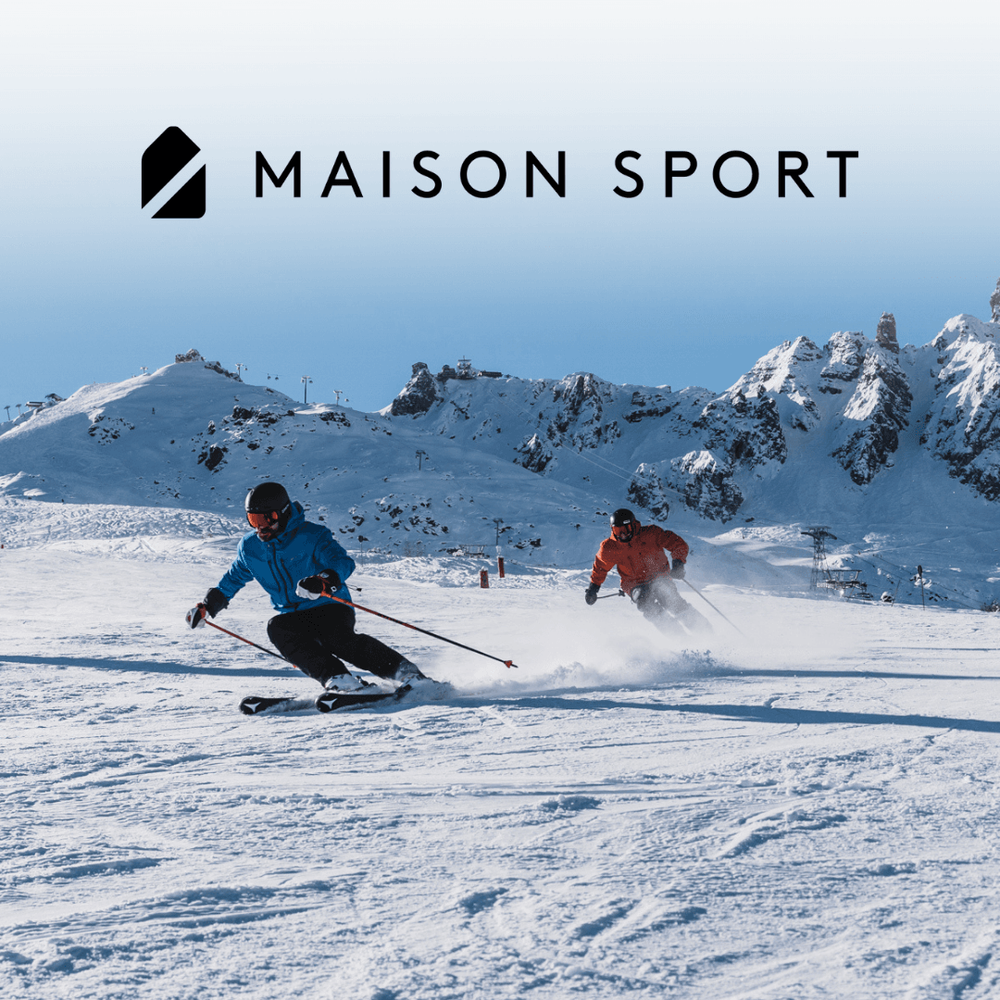
Maison Sport
Preferred Partner
Book Ski Lessons in Livigno
Choose from top-rated expert ski instructors in Livigno and
elevate your experience on the slopes! Private, group and off-piste
lessons available.
The Après-Ski in Livigno
While many of the mountain huts across the ski area of Livigno will get things going with live music on sun-soaked terraces, après takes off at both the base stations, where you’ll find umbrella bars dishing out cheesy Europop and reasonably priced drinks. A great example is Stalet, sitting at the bottom of the Carosello black run, with its huge circus tent, frequent DJ sets and themed nights. If it’s something more low-key you’re after, there are plenty of bars, and hotels to choose from for cocktails and roaring fires.
"Always sunny and apres ski never disappoints!"
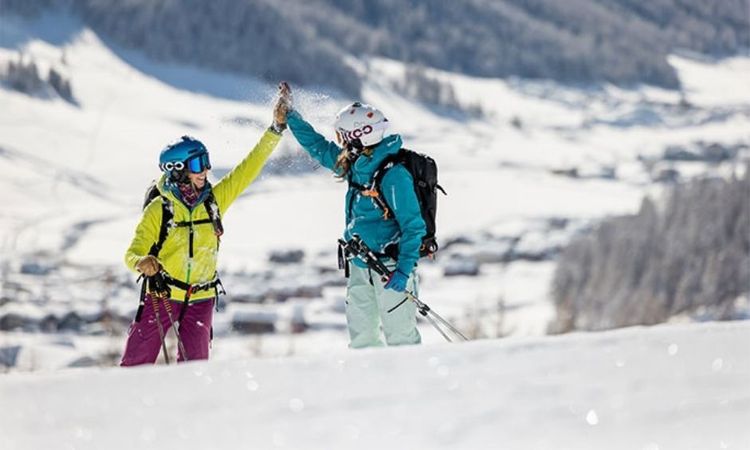
Livigno for Families
Families will be glad to know that there’s a large ski school operating in the resort along with a dedicated kid’s club, Lupingo. The Kinder Park (located near the Campo Scuola 23) also features tubing, sledding, inflatables and adventure trails to enjoy. There are also several other features designed for children spread out across the mountain, such as the kid’s cross at The Beach snowpark.
For non-skiers, duty-free shopping is the biggest draw but Aguagranda comes in a close second, with a dedicated wellness and relaxation area. There’s also a separate area for families and little ones, complete with slides and fun pools.
Accommodation in Livigno
Thanks to the town itself slicing through two ski areas and being very well connected by a free shuttle bus, it doesn’t necessarily matter where you choose to stay. If making those very first tracks each morning is high on your priority list, then we’d suggest you stay in the San Rocco area, close to the Carosello 3000 gondola - just beware that this will also mean you’re close to the après environment of the base station parties.
There’s enough variation of accommodation on offer that you can pick and choose what sort of deal you want, but keep in mind that it’s a hugely popular resort so things are likely to get fully booked. In terms of hotels, the Baita Montana Spa Resort has large and comfortable rooms with great views away from the very busy centre of town, while the Hotel Sporting offers contemporary luxury only a short walk from the après celebrations at Stalet.
Environment and Sustainability in Livigno
Livigno does the usual in terms of free shuttle buses, collective waste and electric car charging points, but we will hopefully see an increase in sustainable infrastructure as a result of the 2026 Winter Olympics.
Pros & Cons of Livigno
Pros
- Guaranteed snow & a long ski season
- Duty-free status can mean cheaper deals
- Large ski area with several terrain parks
Cons
- The resort & pistes are busy all season
- Quite remote so expect longer transfer times
Recent Reviews
intermediate skier ⛷️ United Kingdom
Nicole
Dec, 9 2025
Had the best time at Livigno. Really nice blues, reds, didn’t go on any black slopes. A wide variety of different mountains and slopes to try which was amazing.
The food was also fabulous - ate out every night, really good value for money and really good quality food. Would highly recommend
The food was also fabulous - ate out every night, really good value for money and really good quality food. Would highly recommend
intermediate skier ⛷️ United Kingdom
Edel
Dec, 3 2025
Livingo is a super family friendly and safe resort. We love the child friendly ski schools, restaurants and hotels. There are plenty of ski runs and none are too overcrowded. Runs further out the mountain are really pleasant and worth seeking out. Apres ski can be family oriented in the restaurants, or bars with lively music.
intermediate skier ⛷️
Mirella
Mar, 21 2025
An incredible ski town, perfect for families. Friendly people , amazing food and incredible accommodations. Mostly local Italians so not too touristy.
Livigno Resort Stats
Ski Terrain
27Beginner Runs
37Intermediate Runs
13Advanced Runs
2 kmLongest Run
115 kmSkiable Terrain
1.2 kmsSnow making
4 kmsNight Skiing
Elevation
2900 mTop
1816 mBottom
1084 mVertical Drop
Lifts
6Gondolas / Cable Cars
14Chairlifts
12Surface Lifts
Lift Pass Costs
€910Season pass
€3186 days
€631 day
Weather
300 cmAverage annual snowfall
Livigno Travel Information
Airports
200min drive190KMsMilan Malpensa Airport (MXP)
210min drive200KMsBergamo Orio al Serio Airport (BGY)
230min drive220KMsZurich Airport (ZRH)
240min drive230KMsInnsbruck Airport (INN)
Train Stations
35min drive30KMsTirano
FAQs Skiers' Most Asked Questions
Livigno FAQs: Skiers' Most Asked Questions
Is Livigno snow-sure?
Yes, Livigno is generally considered snow-sure. Sitting at a high altitude (1816m-2900m), the resort typically enjoys reliable snow conditions from November to May. One Snomad community member notes that "the high altitude of the resort almost guarantees snow-sure skiing from November to May." Several users mention good snow quality even in late March, with consistent cold temperatures often keeping the snow in excellent condition throughout the season.
What mountain range is Livigno part of?
Livigno Ski Resort is located in the Italian Alps, specifically in the Lombardy region of northern Italy. It sits within the Ortler Alps mountain range, close to the Swiss border. The resort's high-altitude position (1,816m-2,900m) contributes to its reliable snow conditions throughout the season, as mentioned by several Snomad users who praise its snow quality even in late March.
When does the ski season start and end in Livigno?
Livigno typically enjoys a long ski season running from late November through to early May. Thanks to its high altitude (1816m-2900m), our users report reliable snow conditions well into spring. One Snomad community member noted they had "great snow in late March," while another mentioned that Livigno "almost guarantees snow-sure skiing from November to May." The resort's elevation helps maintain good conditions throughout the winter season.
Is Livigno good for beginners?
Livigno is excellent for beginners with 27 dedicated beginner runs and wide, well-groomed slopes. Our users consistently highlight the quality of ski schools, with Gregg mentioning it's "highly recommended for families." The resort scores impressively for family friendliness (4.82/5) and Chris notes that "instructors are very child friendly." A free bus service connects the whole area, making it easy to access the gentler slopes regardless of where you stay.
Is Livigno good for intermediate skiers?
Absolutely! Livigno is fantastic for intermediate skiers, scoring 4.83/5 for intermediates. With 37 dedicated intermediate runs, it offers wide, flowing pistes perfect for progressing your skills. Several Snomad users highlight its suitability - Gregg mentions "a huge selection of runs" while Simon, an intermediate skier, calls the slopes "brilliant" after multiple visits. The efficient lift system and well-groomed runs make it easy to clock up plenty of mileage.
Is Livigno good for advanced skiers?
Livigno offers solid options for advanced skiers, with a rating of 4.33/5 for advanced skiing and 4.60/5 for experts. While some users mention it lacks extensive black pistes, the accessible off-piste areas are highly praised. One Snomad community member who's visited 8-9 times highlights "easily accessible off-piste areas" as "a huge bonus" for those wanting a safer powder experience. The 13 advanced runs provide good variety, though some advanced skiers might find the terrain somewhat limited.
Is Livigno good for expert skiers?
Livigno gets solid marks for experts (4.60/5), though some users note it's limited for black pistes. One Snomad community member who's an expert snowboarder praised the "huge off-piste areas" and mentioned that you can still "hit perfect powder days in March." The resort offers heli-skiing options, while another expert skier noted that the best off-piste and wooded slopes are on the ski school mountain. For advanced riders seeking variety, it's worth exploring both sides of the valley.
Is Livigno good for non-skiers?
Livigno offers plenty for non-skiers. Our users highlight the duty-free shopping, with bargains on alcohol, perfumes and electronics throughout the town. The resort scores well for eating out (4.69/5), with excellent restaurants serving local cuisine at reasonable prices. There's also a swimming pool with slides, and the vibrant après-ski scene welcomes everyone. Free buses make getting around easy, and the beautiful alpine setting provides a stunning backdrop for relaxation.
Is there snow at Christmas in Livigno?
Yes, Livigno typically has reliable snow at Christmas. The resort's high altitude (1816m-2900m) helps ensure good snow conditions during the festive period. Our Snomad users highlight the resort's snow reliability, with Steve noting that "the high altitude of the resort almost guarantees snow shore skiing from November to May." The consistently cold temperatures (Daniel mentioned experiencing -20°C) also help maintain snow quality throughout the Christmas season.
Where should I stay in Livigno and what type of accommodation is available?
Livigno offers accommodation throughout its elongated valley. Most users recommend staying centrally for easy access to shops, restaurants, and nightlife. The resort scores impressively for accommodation options (4.54/5).
One Snomad community member advises checking where your lodging is relative to the slopes, as the town is quite spread out. Free buses run throughout the day, making all areas accessible. Options range from hotels and apartments to budget-friendly campsites, with something for every price point.
According to our reviewers, apartments often provide excellent value in this duty-free resort, especially for families or groups wanting to take advantage of the value for money (4.60/5) the resort offers.
What's the best way to get to Livigno?
Livigno's remote location is part of its charm, but requires some planning. Most international travellers fly to Milan (Malpensa or Bergamo) and then take a 3-3.5 hour transfer. One Snomad community member mentioned flying to Bergamo followed by a 3-hour drive. Some users also arrive via Innsbruck, Austria (approximately 3.5 hours). The journey might be lengthy, but users confirm it's worth it for the excellent skiing and duty-free shopping benefits.





